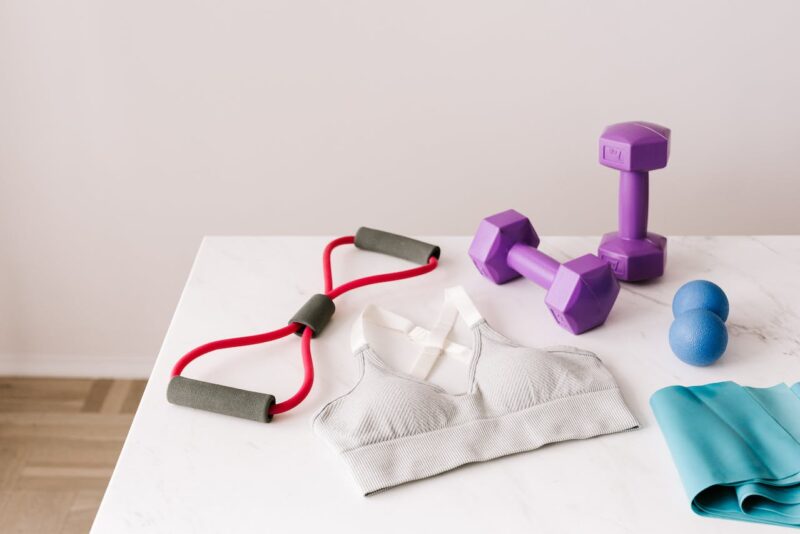Did you know that more than 80% of women wear the wrong bra size? Sure, it’s an uncomfortable subject, but it’s important to know how a bra should fit, as an ill-fitted bra does more than cause irritation and occasional red marks. It can also negatively impact your breasts, shoulders and back, posture, and confidence.
Is Bra Size Really That Important?
It’s not the size of the bra that matters; what’s important is finding the right fit for you. A bra that’s too tight, for example, can cause discomfort and strain your shoulders. You may notice red marks on your skin or feel like the snaps of the bra are poking into your back.
Additionally, if your bra is digging into your breast area or constantly rubbing against your skin, it may cause chafing or even abrasions.
On the other hand, if a bra is too loose, it won’t provide the necessary support you require, which may lead to sagging years later and stretch marks.
A Quick Note on Stretch Marks
Wearing the wrong bra size does not directly cause stretch marks. Stretch marks develop when your skin stretches beyond its limit. However, wearing a bra that does not fit properly can lead to improper breast support, which may cause your breasts to sag over time.
This can result in stretch marks on the breasts due to the stretching of the skin.
How Should a Bra Fit?
A well-fitted bra should fit snugly around the rib cage, with the band parallel to the ground and not riding up. The cups should fully encase your breasts without any spillage or gaping.
Additionally, any underwire, if present, should sit flat against the rib cage and not dig into the breast tissue. The straps should feel comfortable and provide support without pressing deeply into your shoulders.
Finally, it’s important to make sure that your bra doesn’t feel too tight or too loose.
If you’re constantly adjusting your bra, chances are it’s the wrong fit.
Does Bra Material Matter?
There is no evidence to suggest that a specific bra material affects your breast health. Some women may prefer natural materials like cotton or bamboo for breathability and comfort while others may prefer silk or lace.
It’s important to note that underwire bras do not cause breast cancer. There are certain misconceptions that underwire bras block the drainage of lymph fluid from the bottom of the breast so it can’t get back into your body. This, however, is not based on any scientific evidence.
Learn more facts from fiction about your breast health.
How Can I Find the Right Bra Size?
Is your bra leaving red marks on your skin or gapping at the top? Do you experience breast discomfort or aches in this area due to tightness from your bra? You’re likely wearing the wrong size. The good news is, you can find your bra fit with 5 easy steps.
- Start by wearing a non-padded bra that fits you well. This will give you a more accurate measurement.
- Take a measuring tape and measure around your ribcage, just below your bust. This measurement is your band size. Make sure the measuring tape is snug around your body, but not too tight.
- If you get a decimal number or an odd number that falls between traditional band sizes, it’s best to round up to the nearest whole, even number. For example, if you measure 33 and a half inches or 33 inches, you should round up to 34 inches. This rounded number will be your band size.
- Next, measure around the fullest part of your bust. Make sure the measuring tape is level around your body and not too tight.
- Subtract your band measurement (step 3) from your bust measurement (step 4). The difference will give you your cup size.
Use the chart below to determine your cup size:
- If the difference is less than 1 inch, you are an AA cup.
- If the difference is 1 inch, you are an A cup.
- If the difference is 2 inches, you are a B cup.
- If the difference is 3 inches, you are a C cup.
- If the difference is 4 inches, you are a D cup.
- If the difference is 5 inches, you are a DD/E cup.
- If the difference is 6 inches, you are a DDD/F cup.
- If the difference is 7 inches, you are a DDDD/G cup.
- If the difference is 8 inches, you are a H cup.
You can also request a bra fit guide from the National Breast Cancer Foundation, Inc. or visit a local lingerie shop near you for a professional measurement.
Stay Proactive In Your Breast Health Journey
Wearing a properly fitting bra can provide support, improve posture, and enhance your overall comfort. When you feel comfortable and supported, you are more likely to feel confident and empowered in your own skin.
However, the most important factor in your breast health journey is having your regular mammogram.
Schedule Your Mammogram
Remember to schedule your annual mammogram to protect your breast health. A mammogram can detect breast cancer in its early stages, even before any symptoms appear.
Therefore, early detection is key to successful treatment and an increased chance of success. Mammograms use low-dose X-rays to produce images of breast tissue, which can reveal any abnormalities early on so you and your healthcare team can take action immediately.

